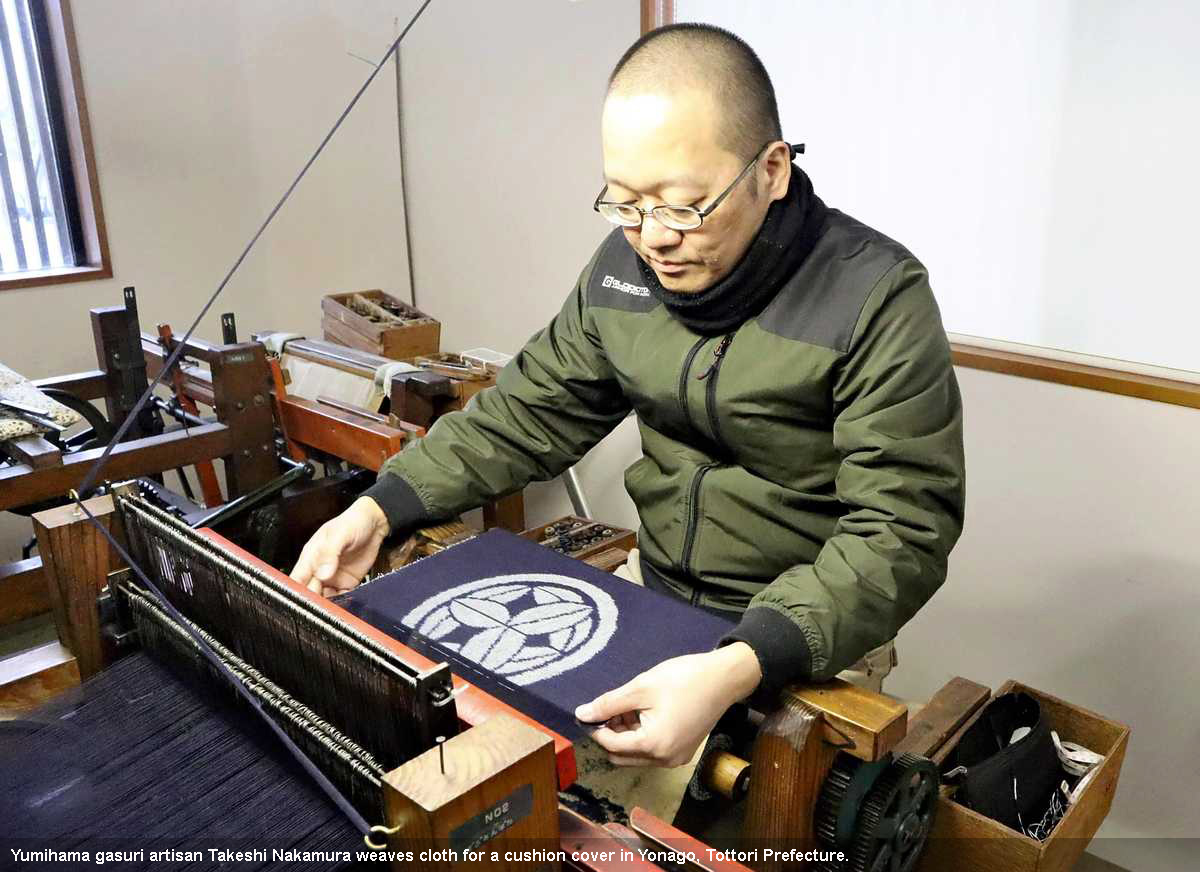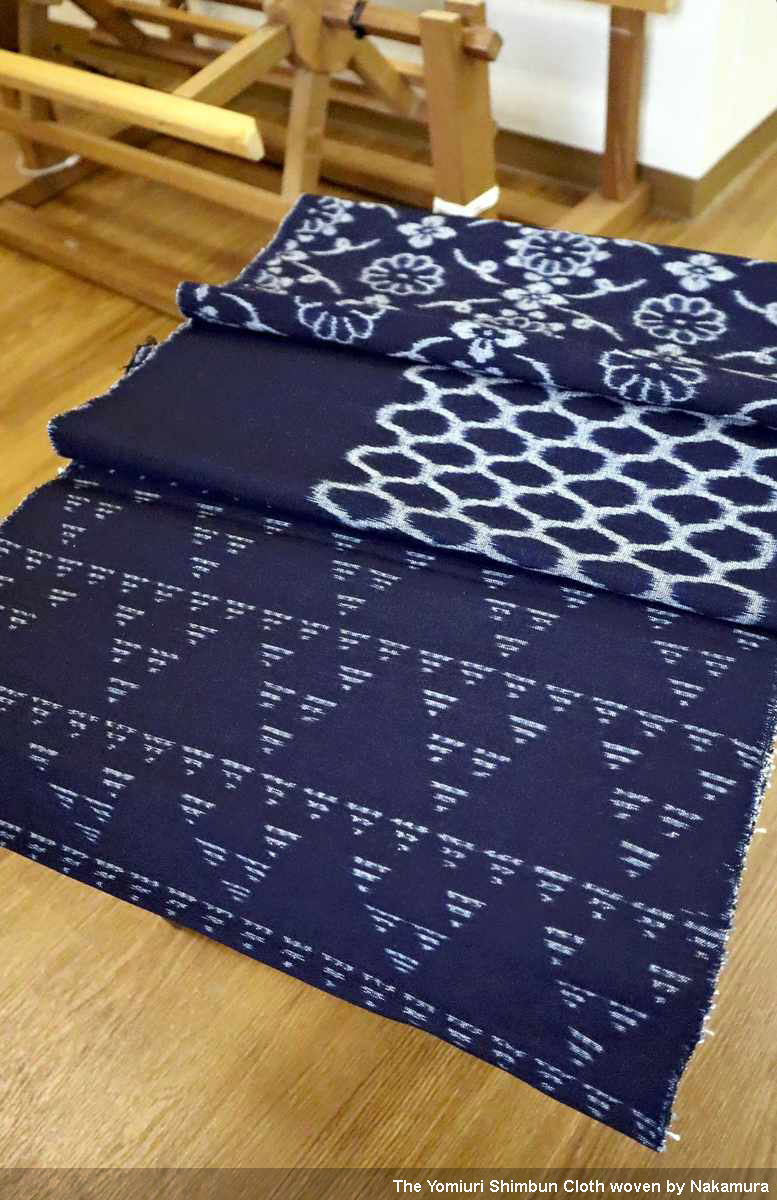
Category: HOME TEXTILES
Country: Japan
Region: Asia
Locals Also Trying to Reinvigorate Cultivation of Hakushu Cotton
By Kodai Fujimoto
Yomiuri Shimbun Staff Writer
11:30 JST, 10th April, 2025
YONAGO, Tottori — Yumihama gasuri is a traditional cotton fabric produced in western Tottori Prefecture. The textile was originally woven by farm women to make clothes for working or ceremonial purposes for their families. Although its production has long since peaked, local artisans are working to revive the traditional fabric.
The deep indigo fabric’s texture is rough, and dyed white with patterns such as cranes and tortoises as well as the triangular urokomon pattern. The auspicious patterns are believed to carry the weaver’s hope for the happiness for the family.
Production of Yumihama gasuri began in the Edo period (1603-1867) using locally produced Hakushu cotton. It developed as a side job for farmers and reached its peak from the late Edo period to the Taisho era (1912-1926).
In 1975, the government designated Yumihama gasuri as a traditional handicraft.
 On a recent day, Yumihama gasuri craftsperson Takeshi Nakamura, 46, was weaving cloth using dyed threads at his workshop in Yonago, Tottori Prefecture. Stepping on a pedal of his loom, he passed the weft threads through more than 800 warp threads repeatedly, making sure that the patterns did not shift.
On a recent day, Yumihama gasuri craftsperson Takeshi Nakamura, 46, was weaving cloth using dyed threads at his workshop in Yonago, Tottori Prefecture. Stepping on a pedal of his loom, he passed the weft threads through more than 800 warp threads repeatedly, making sure that the patterns did not shift.
Other weaving processes include warping, in which the number and length of the threads are adjusted, and kukuri tying, in which a bundle of threads is tied and then dyed to create patterns. It takes about three to four months to complete one piece of noren, a traditional Japanese curtain.
“The techniques for making Yumihama gasuri were created to make sure anyone who wants to weave them can do so. Now it looks troublesome, but what is needed are not special skills, but patience and time,” Nakamura said.
Nakamura is a member of a program’s inaugural class to train successors that was started by the prefectural Yumihama gasuri cooperative association in 2007. He learned the techniques from specialists, including the late Etsuko Shimada, who was recognized by the prefecture as a preserver of intangible cultural properties.
Nakamura later opened his own workshop. Now he makes curtains, pillows and teddy bears using the textile.
Last year, he was recognized as an artisan holding a high level of skills in producing Yumihama gasuri, becoming the first person to receive the honor in 10 years.
Nakamura also serves as the director of the association.
Six people have completed the training program, and the number of Yumihama gasuri-related businesses has increased to nine from four in 2006. The artisans mostly work individually and create products, making use of their young sensibilities.
“Overall Yumihama gasuri production capacity has declined, but each business has its own individuality. I hope that each person will find a successor,” Nakamura said.
The cultivation of Hakushu cotton, which declined after the Meiji era (1868-1912) due to competition from imports, has also been revived.
In 2008, the Sakaiminato agricultural public corporation began cultivating Hakushu cotton using seeds provided by residents. The corporation annually harvests 200 to 300 kilograms of the cotton, which is then processed into threads.
According to Ayataka Tokumo, 52, the cotton is resilient and allows weavers to easily create a soft texture with since the fibers are short and thick. Tokumo is a member of a group engaging in its cultivation and working to revitalize the local community.
The steady efforts of locals are supporting traditional techniques and materials.
Courtesy: japannews.yomiuri.co.jp
Copyrights © 2025 GLOBAL TEXTILE SOURCE. All rights reserved.